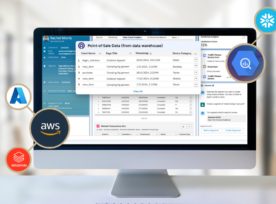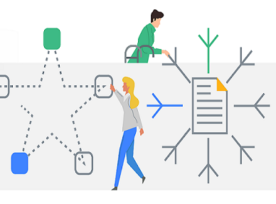In the realm of data management and analytics, the terms ETL (Extract, Transform, Load) and ELT (Extract, Load, Transform) have been commonplace for decades. They describe the processes involved in moving data from one system to another, transforming it as needed along the way. However, with the advent of technologies like Salesforce Data Cloud, a […]
Databricks
ELT IS DEAD. LONG LIVE ZERO COPY.
Imagine a world where we can skip Extract and Load, just do our data Transformations connecting directly to sources no matter what data platform you use? Salesforce has taken significant steps over the last 2 years with Data Cloud to streamline how you get data in and out of their platform and we’re excited to […]
Apache Spark: Merging Files using Databricks
In data engineering and analytics workflows, merging files emerges as a common task when managing large datasets distributed across multiple files. Databricks, furnishing a powerful platform for processing big data, prominently employs Scala. In this blog post, we’ll delve into how to merge files efficiently using Scala on Databricks. Introduction: Merging files entails combining the […]
Introduction to Star and Snowflake schema
In the world of data warehousing and business intelligence, two key concepts are fundamental: Snowflake and Star Schema. These concepts play a pivotal role in designing effective data models for analyzing large volumes of data efficiently. Let’s delve into what Snowflake and Star Schema are and how they are used in the realm of data […]
Spark DataFrame: Writing into Files
This blog post explores how to write Spark DataFrame into various file formats for saving data to external storage for further analysis or sharing. Before diving into this blog have a look at my other blog posts discussing about creating the DataFrame and manipulating the DataFrame along with writing a DataFrame into tables and views. […]
Spark SQL Properties
The spark.sql.* properties are a set of configuration options specific to Spark SQL, a module within Apache Spark designed for processing structured data using SQL queries, DataFrame API, and Datasets. These properties allow users to customize various aspects of Spark SQL’s behavior, optimization strategies, and execution environment. Here’s a brief introduction to some common spark.sql.* […]
Date and Timestamp in Spark SQL
Spark SQL offers a set of built-in standard functions for handling dates and timestamps within the DataFrame API. These functions are valuable for performing operations involving date and time data. They accept inputs in various formats, including Date type, Timestamp type, or String. If the input is provided as a String, it must be in […]
Spark DataFrame: Writing to Tables and Creating Views
In this Blog Post we will see methods of writing Spark DataFrame into tables and creating views, for essential tasks for data processing and analysis. Before diving into this blog have a look at my other blog posts discussing about creating the DataFrame and manipulating the DataFrame. Creating DataFrame: https://blogs.perficient.com/2024/01/10/spark-scala-approaches-toward-creating-dataframe/ Manipulating DataFrame: https://blogs.perficient.com/2024/02/15/spark-dataframe-basic-methods/ Dataset: The […]
DBFS (Databricks File System) in Apache Spark
In the world of big data processing, efficient and scalable file systems play a crucial role. One such file system that has gained popularity in the Apache Spark ecosystem is DBFS, which stands for Databricks File System. In this blog post, we’ll explore into what DBFS is, how it works, and provide examples to illustrate […]
Spark: DataFrame Basic Methods
DataFrame is a key abstraction in Spark which represents structured data and allows for easy manipulation and analysis. In this blog post, we’ll explore the various basic DataFrame methods available in Spark and how they can be used for data processing tasks using examples. Dataset: There are many DataFrame methods which are subclassified into Transformation […]
Spark Scala: Approaches toward creating Dataframe
In Spark with Scala, creating DataFrames is fundamental for data manipulation and analysis. There are several approaches for creating DataFrames, each offering its unique advantages. You can create DataFrames from various data sources like CSV, JSON, or even from existing RDDs (Resilient Distributed Datasets). In this blog we will see some approaches towards creating dataframe […]
Read Azure Eventhub data to DataFrame – Python
Reading Azure EventHub Data into DataFrame using Python in Databricks Azure EventHubs offer a powerful service for processing large amounts of data. In this guide, we’ll explore how to efficiently read data from Azure EventHub and convert it into a DataFrame using Python in Databricks. This walkthrough simplifies the interaction between Azure EventHubs and the […]











